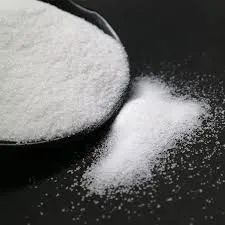An Overview of Plastic Additives Types and Applications
Plastics have become an integral part of our daily lives, appearing in everything from containers and toys to automotive parts and medical devices. However, the properties of pure plastics are often inadequate for specific applications, which is where plastic additives come into play. These substances enhance the performance, durability, and aesthetic appeal of plastic materials. This article provides an overview of the various types of plastic additives, their uses, and their significance in the plastics industry.
Types of Plastic Additives
1. Stabilizers One of the major concerns with plastic products is their susceptibility to degradation due to heat, light, or oxygen exposure. Stabilizers, often in the form of antioxidants or UV absorbers, are added to plastics to mitigate this degradation. For instance, heat stabilizers are widely used in polyvinyl chloride (PVC) to prevent deterioration during processing and application.
2. Plasticizers Used primarily to increase the flexibility and workability of plastics, plasticizers are essential in applications that require bending or stretching. Phthalates and adipates are common plasticizers, primarily found in soft PVC products like flooring and electrical cables. However, concerns over the safety of some plasticizers have led to the development of bio-based alternatives.
3. Fillers Fillers are materials added to plastics to improve their mechanical properties, reduce costs, and modify other characteristics like thermal stability. Common fillers include wood flour, talc, and calcium carbonate. By improving properties such as tensile strength or impact resistance, fillers enable plastics to be used in more demanding applications, such as construction materials.
4. Colorants Aesthetic appeal is crucial in many consumer-oriented products. Colorants, including dyes and pigments, are added to deliver the desired color and opacity. For instance, organic pigments are commonly used in packaging and toys, whereas inorganic pigments often provide lasting color for outdoor applications due to their stability against UV radiation.
plastic additives list

5. Flame Retardants Given the increasing focus on safety, flame retardants have become essential additives, particularly in electronics, textiles, and construction materials. These chemicals work by suppressing combustion or delaying the ignition of materials. Although effective, the use of certain flame retardants has raised environmental and health concerns, prompting research into safer alternatives.
6. Surfactants and Processing Aids These additives improve the manufacturability of plastics by enhancing the flow properties during processing. Surfactants can assist in dispersing fillers or colorants uniformly throughout the plastic matrix. Processing aids facilitate mold release, which is vital in production efficiency.
The Importance of Plastic Additives
The role of plastic additives extends beyond enhancing performance; they are crucial for ensuring compliance with industry regulations regarding safety and environmental impact. The plastics industry faces ongoing challenges, including the push for more sustainable materials and formulations. Additives contribute to these goals by improving recyclability and reducing the carbon footprint of plastic products.
Furthermore, as consumer awareness regarding health and environmental issues increases, manufacturers are under pressure to adopt safer and more sustainable additive options. This has led to innovations in bio-based additives and the quest for non-toxic alternatives across various plastic applications.
Conclusion
In conclusion, plastic additives play a vital role in the functionality, safety, and aesthetics of plastic products. With a diverse range of additive types—each designed to target specific performance characteristics—the plastics industry continues to evolve, adapting to market demands and regulatory pressures. As technology and research advance, the future of plastic additives looks promising, fostering innovations that align with sustainability goals while meeting consumer expectations. Through responsible usage and continuous improvement, the additives industry can ensure that plastics remain a versatile, safe, and sustainable resource in various applications for years to come.

